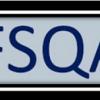We are a whole seller company of seafood. We process fresh fish for sale but we have some traded products.
company is BRC certified.
we have small amount of cavier jars that is stored in one of the chill.
in last years because we knew which day is audit day (announced) we removed the jars from factory but this year is unannounced.
is there any solution to keep the jars but through the risk assessment shows risk of contamination is very low?














